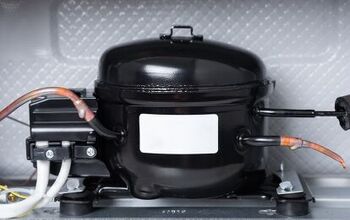How Much Does It Cost to Replace or Repair a Drain Line?

Drain lines carry dirty water and other liquids away from the fixtures you have installed throughout your home. They handle a very unpleasant job for us and we need them in good shape all the time. If your drain lines are clogged or damaged, you will be able to tell quickly.
Your home will not function properly if there are damaged drain lines in your plumbing system. You will either have to repair or replace those drain lines so your home can be free of overflowing sewage. So, how much should you expect to spend on repairing or replacing your drain lines?
Relining your existing drain line costs an average of $148 per foot. Cured-in-place pipelining is the most expensive relining method at $170 per foot. Replacing an existing drain line costs an average of $1,040. The exact cost of replacing a drain line will change based on your chosen material and the location of the issue.
Busted drain lines can cause all kinds of problems inside your household. Repair or replace them as soon as possible so you don’t have to deal with supplemental damage. Find out how much repairing or replacing your drain lines will cost by continuing with the rest of this article.
Cost to Repair a Drain Line
| Relining Method | Cost Per Foot |
| Cured-In-Place Pipe Lining | $170 |
| Internal Pipe Coating | $150 |
| Pipe Bursting | $140 |
| Pull-in Place Pipe Lining | $130 |
The damage to your drain line may be significant, but it may not be bad enough to necessitate pipe removal. In that case, you can opt for relining instead of completely replacing your drain line. The average cost of relining is $148 per foot.
You can expect the cost of relining to change based on the specific method that will be used. Detailed below are the different methods of relining that can be used to repair your troublesome drain line.
Cured-In-Place Pipe Lining
Let’s start by discussing the method known as cured-in-place pipe lining. Some plumbers may also refer to this as the CIPP method. Cured-in-place pipe lining is the most expensive relining method at $170 per foot.
This relining method involves placing a flexible liner inside the damaged pipe. Once the liner is in position, it will be heated until it hardens. Thanks to the added liner, the damage to the existing pipe will no longer cause problems.
Many homeowners like the CIPP method because it can restore pipes effectively. After the process is finished, the previously damaged pipe will almost seem completely new. The repaired drain line should be good to go for several decades following the curing.
Internal Pipe Coating
Next up, a drain line can also be repaired using the internal pipe coating method. The average cost of adding an internal pipe coating to a damaged drain line is $150 per foot.
Applying an internal pipe is a multi-stage process. The plumber will have to access the damaged pipe, drain it, and allow it to dry. The epoxy coating will then be applied to the internal portion of the pipe.
The applied epoxy coating will fortify the drain line after it hardens. You won’t have to worry about leaks again for a long time.
Pipe Bursting
Pipe bursting is another relining method that can be used to address fix your damaged drain line. You can expect to pay $140 per foot for pipe bursting.
Compared to the other relining methods, pipe bursting is more drastic. This is closer to replacing the drain line as opposed to just repairing it.
As the name of the method hints at, the existing drain line is destroyed with the use of a bursting head. A new pipe is then dragged into place and it serves as the substitute to the old drain line.
Pipe bursting is a very disruptive repair method, but it will get the job done. Consider it if your old drain is already badly damaged.
Pull-in Place Pipe Lining
One more relining method that can be implemented to repair your damaged drain line is pull-in place pipe lining. This is slightly cheaper than the other methods at $130 per foot.
Pull-in place pipe lining works for damaged drain lines as well as pipes that have moved out of position. It can be used to fill in the gaps in your plumbing system.
To get started, the workers will first insert the liner into the damaged pipe from one end. They will then pull the liner into position via a different access point. Air will also be used to help secure the liner.
Cost of Replacement Drain Lines
| Drain Line Material | Cost Per Linear Foot |
| Cast Iron | $20 |
| Copper | $8.50 |
| Polypropylene | $8 |
| PVC | $4 |
The current drain line you have installed may already be in rough shape. It may only be a matter of time before it completely bursts. Instead of waiting until then, you can prevent the issue by replacing your drain line.
Of course, replacing a drain line will require choosing a new pipe first. You can take that opportunity to also use a different material for your drain line. Let’s go over the most commonly used materials for drain lines in this section of the article.
Cast Iron
Cast iron is one of the more conventional material options available if you need a new drain line. It’s also one of the most expensive options at $20 per linear foot.
Is it worth paying that much for a new cast iron drain line? If you want a material that can mitigate noise effectively, then cast iron is a good choice. It’s also remarkably strong meaning it won’t get knocked out of position easily.
Unfortunately, rusting is a common issue with cast iron pipes. You will eventually have to replace your rusty cast iron pipes, although they won’t be an issue for a while.
Copper
Copper is another option for you to consider if you need a new drain line. New copper piping costs $8.50 per linear foot.
The main selling point of copper is its longevity. It can easily last for up to 50 years as long as you use it properly.
Copper pipes can also handle extreme temperatures easily. Extreme cold or heat will not damage it.
Acidity is a different matter. If you routinely flush acidic liquid down your drain, you can expect the copper drain line to wear down quickly. Be wary of how you dispose of waste if you want to prolong the usefulness of your copper drain line.
Polypropylene
You also choose to install a polypropylene drain line. Polypropylene is slightly cheaper than copper. Polypropylene pipes are available for $8 per linear foot.
Plumbers like installing polypropylene pipes because they are very lightweight. It’s easier to get them in position because of that. The installation of your new drain line can also be finished faster if you’ve chosen polypropylene pipes.
Polypropylene pipes can also last for a while although they aren’t on the same level as cast iron and copper pipes. Still, you can argue that they are the better to use given their price and how resistant they are to damage.
PVC
Opt for a PVC drain line if you want something affordable. PVC pipes only cost $4 per linear foot so you can save a good chunk of money by choosing them.
Do note that PVC pipes cannot be used everywhere. They will warp if they are consistently exposed to heat so avoid using them to dispose of hot water.
As long as you install your PVC drain line in the right spot, it can be a great addition to your plumbing system. You can also count on it to remain in good working condition for many years to come.
Cost to Replace Drain Line by Location
| Location | Cost |
| Basement | $400 |
| Bathtub | $600 |
| Sink | $350 |
| Underground | $2,800 |
Location is yet another factor that significantly affects the cost of replacing your drain line. That should come as no surprise since some spots are harder to access than others. Learn more about how costly drain lines are to replace based on their location by checking out the information below.
Basement
The basement is a part of the home often chosen to house the drain line. If that’s where your problematic drain line is, you can expect to spend $400 on replacing it.
Replacing a drain line in the basement typically involves cutting into the concrete slab. That step is necessary so the workers can access the damaged pipe and remove it.
You might have assumed that the presence of the concrete slab would have hiked up the cost of replacing a basement drain line. However, the fact that the plumbers can work more freely inside the basement does make up for that.
Bathtub
Your bathtub may be flooded all the time because the drain line connected to it is no longer working properly. Address that issue by replacing the drain line attached to your bathtub. Replacing your bathtub’s drain line will cost $600.
The placement of your drain line will be crucial here. Hopefully, your drain line is far enough that the plumber can access it without removing the bathtub.
If your drain line is close to the bathtub, then the fixture will have to be removed first. That will significantly increase the cost of this project.
Sink
Do you need the drain line for one of your sinks replaced? Plumbers will charge $350 for that kind of service.
The cost of replacing a drain line for a sink is low because it’s relatively easy. More often than not, the drain line is already exposed or just hidden behind a cabinet door. The placement of the drain line makes it easy for the plumber to replace it.
Underground
Lastly, the drain line you need to replace may also be located under your home. You will have to spend a lot of money to get that pipe removed and replaced. To be more specific, you’re likely looking at a bill of $2,800 if you need underground drain pipe replacement.
Aside from being pricey, underground drain pipe replacement is also time-consuming. The workers will have to dig up the dirt close to the drain line to access it. Your plumbing system may also not be usable until the underground drain line has been replaced.
Related Questions
How Do I Know if My Sewer Line Needs to Be Replaced?
The signs of a broken drain line are hard to miss. Inside your home, you may notice that fixtures like your sink or tub are taking longer to drain. You may also hear some gurgling noises as the water goes down.Outside, you may step on some wet spots because your drain line is leaking. Some parts of your lawn may also look greener than normal due to the water coming from the drain line.
How Long Should a Sewer Line Last?
The longevity of your drain line will depend largely on its material makeup. Cast iron pipes usually last the longest. They can remain in good condition for more than 70 years if you take good care of them.Copper is another drain line material that should last a long time. Polypropylene and PVC pipes are also durable, but they fall short compared to copper and cast iron.
Does Homeowners Insurance Cover Sewer Line Repair?
Whether your homeowners insurance will cover your sewer line will depend on its placement and the damage it sustains. The drain line has to be within your property line for it to be covered. Your insurance will also only kick in if the damage was caused by something you could not prevent.

Gary Evans is passionate about home improvement. He loves finding out how to make improvements in the easiest, most practical, and most affordable ways. Upgrading his home kitchen is one of his ongoing hobbies. Gary is also a long-time content creator and enjoys spending his free time tending to his hydroponic vegetable garden.
More by Gary Evans










![How Much Do Pool Repairs Cost? [By Type & Material]](https://cdn-fastly.upgradedhome.com/media/2023/07/31/9103564/how-much-do-pool-repairs-cost-by-type-material.jpg?size=350x220)















